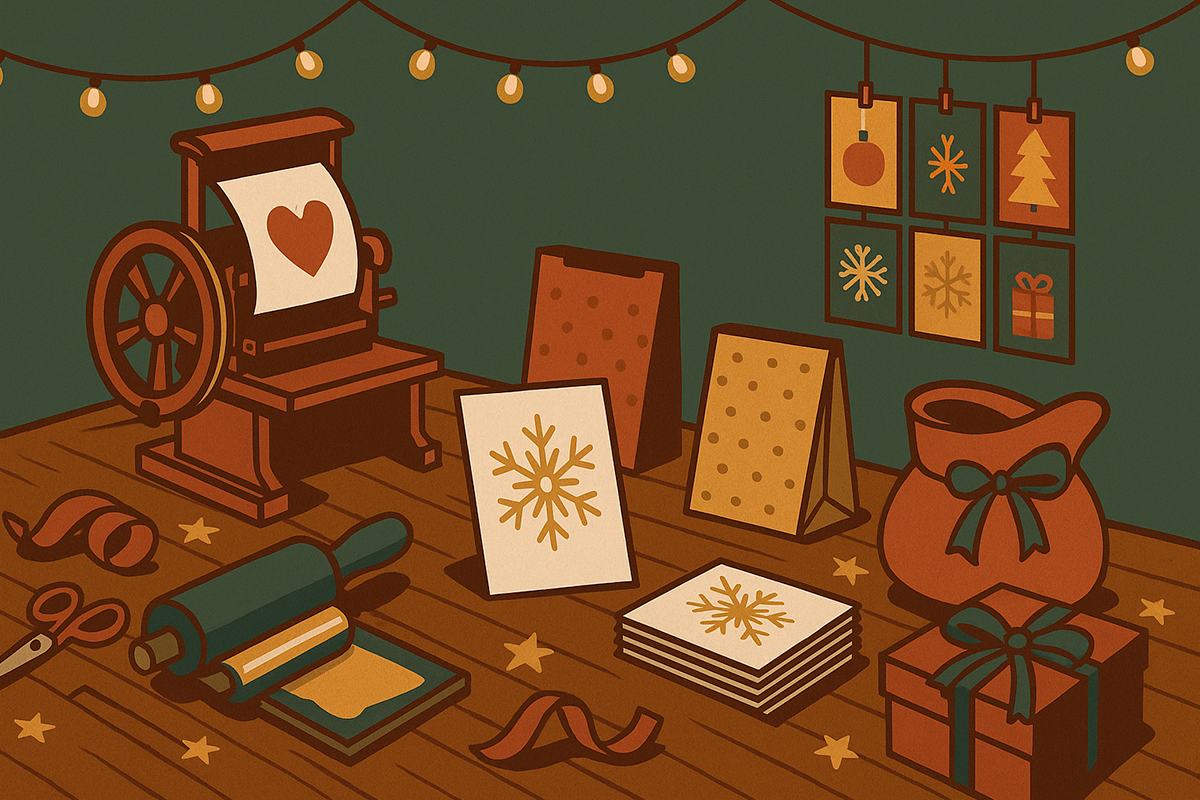Top Design Tips for Creating Eye-Catching Booklets
Unlock the full potential of your booklets with expert tips on layout, imagery, typography, and branding for effective print marketing.
.png)
The abundant space for content and design that booklets provide is a major perk of the format. However, if you’re not sure how to use it, this perk may feel more like a burden than a boon. Especially when you’re staring down multiple blank pages with no idea where to start.
Fortunately, if you find yourself struggling with this, you don’t have to tough it out alone. As a veteran printer with countless booklet runs under our belt, we know a lot about how to make this medium shine. Now, we’d like to share our insights with you, so that you can get this versatile product working wonders for your marketing, sales, or organizational goals.
Keep the Layout Clean and Organized
One of the hidden pitfalls of a medium with so much space is just how easy it is to overfill it. When you’re just starting out, that space can feel overwhelming, and the temptation to throw everything at it can be high. However, we strongly encourage you to fight that instinct.
One way to keep things looking clean and organized is to think of negative space as an integral part of the design. Establish your minimum margins (the spaces between content and the edges of the page) and gutters (the spaces between columns of content) at the start of your design process, so you won’t be able to accidentally overcrowd things later.
Another smart strategy is to create a wireframe of your design before you add any actual content. Once you have a general layout planned, you’ll know what you can fit in terms of titles, captions, images, logos, etc. This will help you create the right amount of content, or give you a clear target for revising content to suit your booklet.
Finally, find a print partner like Wallace Carlson that offers design assistance. Print professionals have invaluable experience in the art of making a final print look great. If you can leverage that experience to tweak your final design, that can help ensure your end results are as clean and balanced as possible.
Use High Quality Imagery
Another common trap when designing booklets is using low quality images. Remember that, just because something looks alright on your computer screen or on your home printer, doesn’t mean it will pull its weight in a professional print product.
For photography, you generally want a resolution between 300 and 600 dots per inch (DPI). This helps prevent pixelation and keep your images looking crisp and natural. As for graphics, these should be vector files whenever possible. Brand logos, graphs, infographics, and illustrations usually fall into this category. By using vector files, these elements won’t lose any of their definition even if they’re rescaled during the printing process.
If you are ever unsure if your booklet imagery is of sufficient quality, reach out to your print partner. They can provide al the precise specifications you need to ensure the final product looks its best.
Choose the Right Typography
As much fun as it can be to play around with fonts, it’s important to stay disciplined when designing your booklet. If your organization has brand guidelines specifying which fonts to use, go with those. If you have existing fonts but aren’t sure what they are, you can use any number of free tools such as this one to upload a screengrab and try to identify them. If your existing fonts require a license that you don’t have, then look for a free option that has similar characteristics.
Of course, you may also not have any established font standards at all yet. In that case, here are a couple guiding principles for font selection to keep in mind.
Avoid elaborate or irregular fonts, as they can be hard to read.
- Choose a single font for all your text to foster a more cohesive brand identity.
- Consider the space between the characters (kerning), not just the characters themselves.some text
- Too little space can make the text look cramped.
- Too much space can reduce the amount of content you can include.
Incorporate Branding Elements
Finally, no matter what type of organization your booklet is being created for, it should include distinct branding elements. Brand colors, logos, fonts, and graphic elements all help ensure your booklet contributes directly to your brand reputation. Without the consistency these elements provide, no matter how valuable your publication is to someone, there’s a risk they won’t associate that value with you.
Wallace Carlson Can Help You Perfect Your Booklet Design
At Wallace Carlson Printing, we regularly help our clients tweak their print designs to ensure the highest final quality possible. So, are you ready to take your custom booklets to the next level? Discover examples of custom booklet solutions for business use, or find out how to choose the right printing technique to make your booklets shine.
Conclusion
Work that stands out across time and industries
Looking for more insights on print marketing and design? Check out the latest blogs from Wallace Carlson for expert tips, industry trends, and strategies to elevate your brand.



